- Our Future: Solutions
- Science: Explained
What’s the environmental impact of travel?
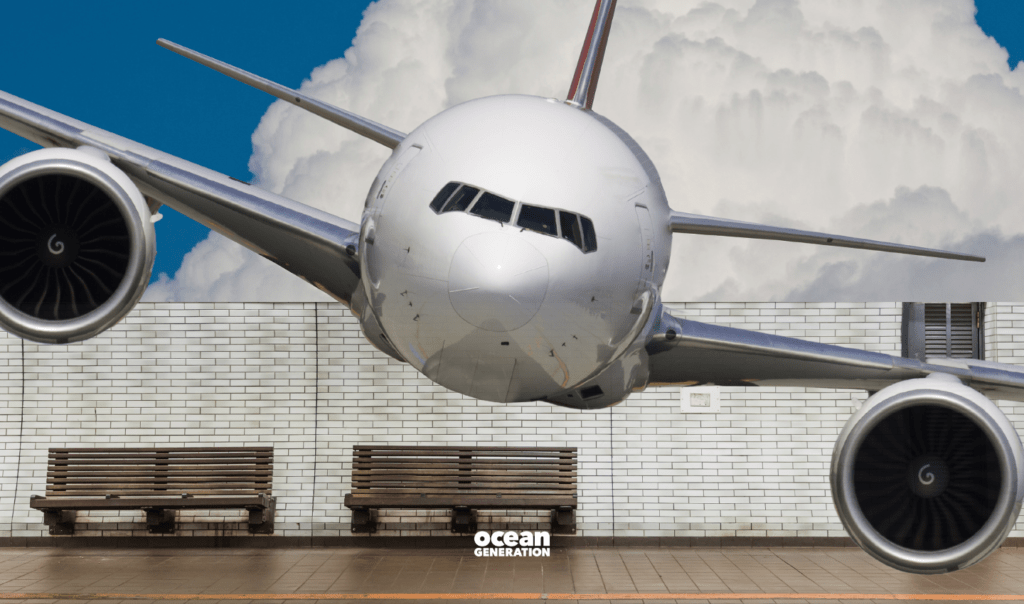
Despite our increasingly sedentary and digitally bound lifestyles, we still need to travel from one place to another – for our basic needs, work, school, or leisure – and it all has an environmental impact.
Imagine your typical week, what kinds of transport do you use? Do you rely on your local bus to get to school? Or perhaps a tram or metro to commute to work? Do you drive or take a taxi to visit your friends and family on the weekend?
Globally, over half of the world’s population live in urbanised areas and we primarily use motorised modes of transport. This makes the sector heavily reliant on fossil fuels.
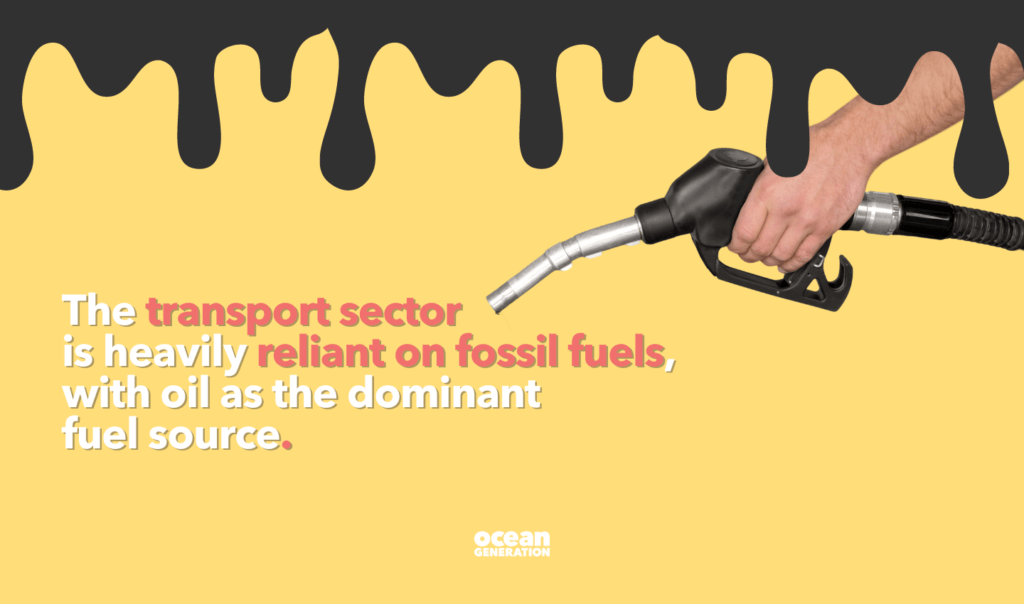
Even with increased electrification of road vehicles and innovative fuel sources, decarbonising this sector has remained challenging.
Environmental impact of the transport sector (in numbers):
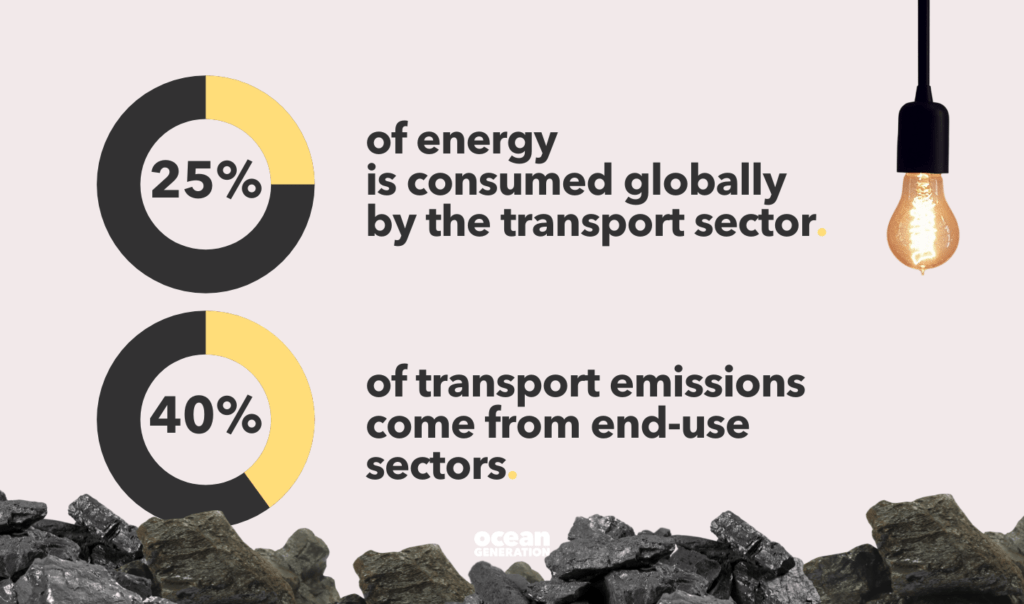
We’re covering 3 areas of interest when it comes to the environmental impacts of travel:
- Air Travel
- Active Travel (walking and cycling)
- Public Transportation
To fly or not to fly?
The short answer is no, where possible.
Air travel, both domestic and international, is higher emitting than is indicated by CO2 emission figures alone.
This is because there are non-CO2 pollutants like nitrous oxides, sulphates, soot particles, etc that are directly released into the upper atmosphere.
Localised effects of these pollutants can be more damaging than the effects of CO2 alone. In fact, one study found that non-CO2 emissions are three times more polluting than just CO2 alone.
Why is flying at night worse for the environment?
Condensation trails, AKA contrails, are line-shaped clouds that form from the water vapour released when burning fuel. These clouds can have both a cooling and warming effect on our planet.
They can cool the Earth’s surface by reflecting sunlight but are disproportionately capable of trapping heat. This means that night flights are more polluting since there is no sunlight to be reflected.

Only a small proportion of the world’s population engage in air travel, but those of us who do can point to it being the largest slice of our personal carbon footprints.
This is especially true for those who fly on private jets. Private jets are 5-14 times more polluting than commercial planes (per passenger) and about 50 times more polluting than trains.
Many uncertainties remain with our understanding of the full impact of contrails and decarbonising air travel has proved to be difficult despite recent innovative advancements.
Active travel is making a comeback
One of the best and most accessible ways of reducing our transport carbon footprint is by walking and cycling.
These two methods of transportation have low lifecycle CO2 emissions and are environmentally friendly alternatives to using a car or public transport. Electric bikes are also on the rise and can aid slightly longer distances.
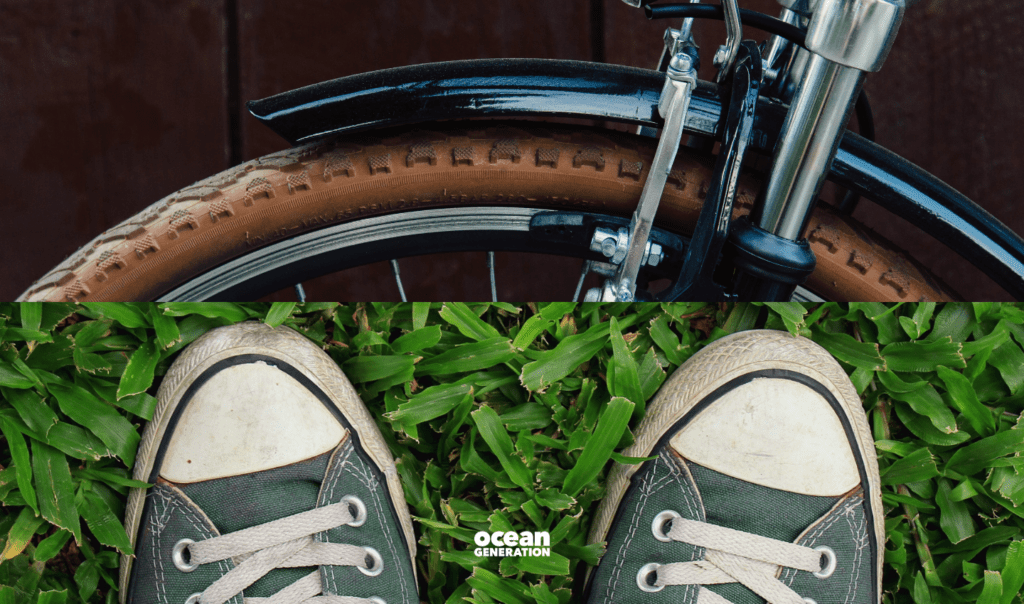
Another benefit of walking and cycling is its positive impact on our health; it has been found to improve our physical health and reduce the risk of various diseases.
This could improve our mental health since it promotes social interactions and helps people feel more connected to both their communities and natural surroundings.
But according to WHO, “More than half of all road traffic deaths and injuries involve vulnerable road users, such as pedestrians, cyclists and motorcyclists and their passengers”.
We need to work on better road infrastructure and safer areas. Active travel needs to be accessible for disadvantaged groups so they too can reap the benefits.
We need better public transportation networks.
An effective public transport system can have significant effects on the reduction of transport related CO2 emissions.
Trains, buses, trams, subways/metros, and more play a vital role decreasing emissions by directly reducing the need for car ownership which in turn minimises road congestion.
Here is a graph representing the carbon footprint of multiple transport modes:
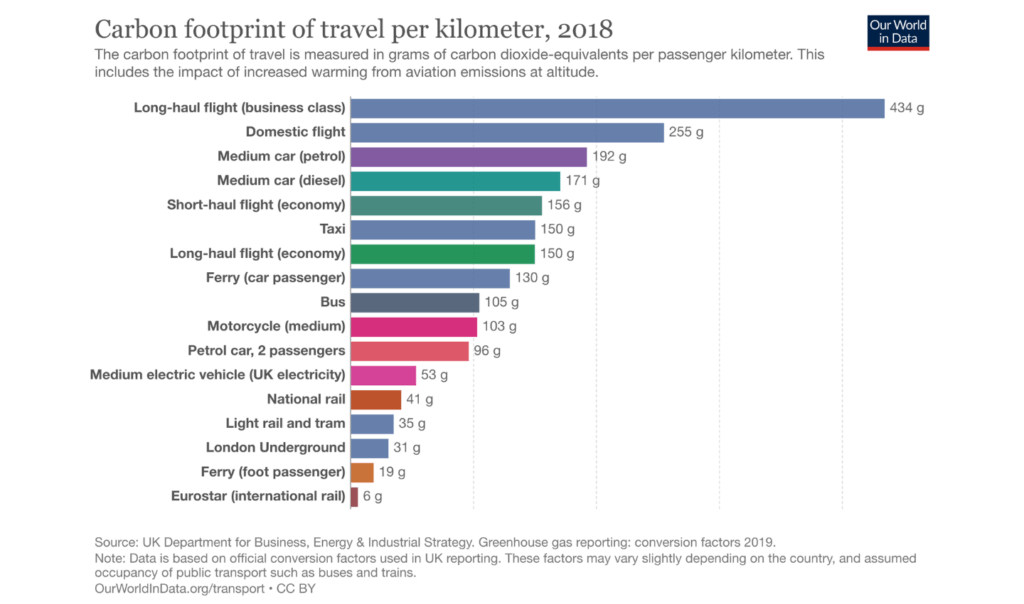
Some of the takeaways from Figure 1 are:
- Overall, the emissions discrepancy between air travel and public transport modes is highly evident.
- Light rail and trams are over 4 times less emitting than taking a taxi.
- Trains are always a better option than flying domestically.
- There is great potential in low-carbon international rail journeys, like in the case of Eurostar.
- Economy seats are more carbon friendly than business class which could be pointed to capacity difference (fewer and bigger seats in business class) and added amenities.

In wealthy countries such as Japan, South Korea, and Germany where a lot of investment and development of public transportation has occurred, it is well used by its locals and, as a result, greenhouse gas emissions from transportation are relatively low.
In comparison, we see the opposite in the US which has invested more in highways resulting in a drop in the use of public transit and transportation emits more greenhouse gases than any other sector of the economy.
Ultimately, a person’s travel choices are deeply influenced by household income and transport prices. The IPCC suggests that increasing adoption of public transport modes will require making public transport more convenient, reliable, and less expensive than using a car.
How can I become a responsible traveller?
Travelling with the environment in mind is possible:
- Reducing the number of flights taken is always the best option.
- Avoid flights if alternatives exist (like rail, bus etc.).
- Choose direct flights where possible to maximise fuel efficiency and minimise emissions associated with take-offs.
- For short to medium distances, consider walking or cycling rather than individual vehicles or public transport.
- Trains, metros/subways, trams, and buses should be chosen over personal vehicles where possible.
- Voice your interest for better and/or more public transport options in your local area, if it doesn’t already exist.
- Write to your local authorities to invest in pedestrian footpaths, cycling lanes, and enhance road safety.
- Sharing is caring; carpooling is a neat way of lowering your individual carbon footprint.




